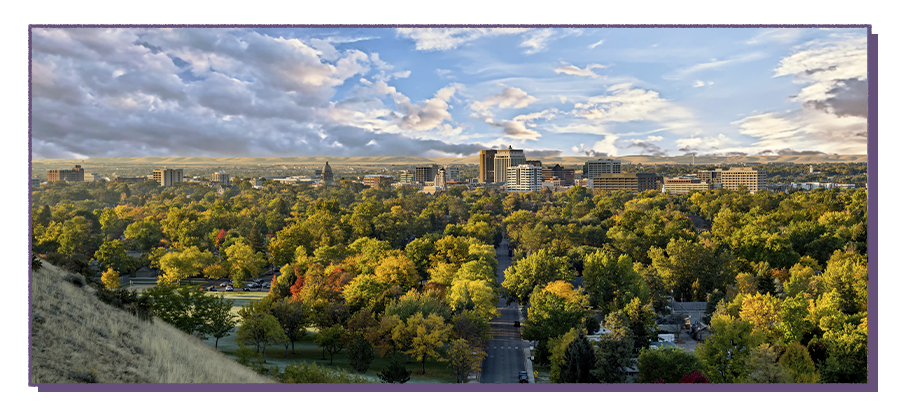
There are nearly 35 million Americans aged 65 or older. By 2032, there will be a shortage of approximately 122,000 physicians in the United States, according to new data published by the Association of American Medical Colleges (AAMC). Demand for physicians will continue to grow, especially in high-need rural areas. Locumstory partnered with two of the largest locum tenens staffing agencies to compare the average pay per day by state for locum tenens physicians in 2019. While the pay rates for individual assignments and specialties may vary, here are the highest paying states for locum tenens physicians as compared to the rest of the nation.

10. Louisiana
Budget cuts in Louisiana are affecting educational programs for medical residents. As a result, some available residency slots may not be filled, as medical students and physicians opt to train in states with more dependable budgets. To add insult to injury, Louisiana is one of the least healthy states in the country in terms of cancer, obesity, and diabetes rates. The difficulty attracting long-term physicians to practice in Louisiana, especially in rural areas, means locums physicians will earn a higher than average wage there —107% of the national median.

9. North Dakota
Unlike some rural areas in the country, North Dakota’s population has grown due to oil-driven economic booms, resulting in workforce shortages state-wide. The need for health care workers is a concern in 75% of 36 North Dakotan communities included in a survey identifying health needs assessments. The shortage includes doctors, specialists, and nurses, with needs concerning mental health, substance abuse, obesity, and financial viability of hospitals. Locum tenens physicians looking to explore the Great Plains could earn 108% of the national median.

8. Tennessee
Similar to Louisiana, there is a shortage of medical residency programs in Tennessee: approximately 200 graduates left the state to finish their training. Research shows that residents tend to stay in the state where they complete training. No surprise then that 18% of people in 111 areas in Tennessee do not have access to enough doctors. Locums physicians in Tennessee can earn 109% of the national median — with excellent barbecue and music as a bonus.

7. Idaho
Idaho is one of four western states without a medical school. There is limited access to medical education, salaries tend to be lower, and it’s tougher to recruit doctors in rural Idaho. Furthermore, Idaho ranks 49th in the U.S. for residents and doctors per capita, according to the AAMC. Locums physicians have the chance to earn 110% above the national median in Idaho.

6. South Dakota
South Dakota is also struggling as a result of the physician shortage, compounded by familiar factors: an aging population with increasing longevity and a lack of residency opportunities for new doctors. Rural areas in this Midwest state are expected to be the most affected. There simply aren’t enough post-graduate training positions in South Dakota, particularly in primary care, general surgery, and obstetrics. If you are a physician practicing in one of these high-need fields (or if Mount Rushmore is on your bucket list), locums in South Dakota could be up your alley, with a rewarding pay scale that’s 114% of the national median.

5. Nebraska
There are 93 counties in Nebraska, and 13 are completely without a primary care physician. There’s a general shortage of physicians practicing pediatrics, obstetrics, and gynecology as well. Shortages in Nebraska and other rural areas like it could be attributed to the fact that often, there is only one practicing doctor per county. Imagine the pressure of being on call 365 days per year. This is one example of why locum tenens and the flexibility it affords is an attractive alternative. Plus, locums physicians in Nebraska get paid 115% of the national median.

4. Delaware
In Delaware, it’s not just the population that is aging; it’s the doctors, too. Nearly 40% of physicians in Delaware are over 55; a third of them could retire in the next 10 years, according to a report conducted by Delaware Health Care Commission. The population in Delaware is expected to rise 30% by 2030, while the number of residents over 60 will skyrocket 43%. Baby Boomers are flocking to Delaware to enjoy low taxes, seasonal amenities, and proximity to major cities. Locums physicians in Delaware can enjoy the same benefits, while getting paid 116% of the median.

3. Utah
Utah ranks 4th from the bottom in the number of primary care physicians per capita, while simultaneously ranking among the fastest growing states in the nation. In Utah, there is an average of 5.7 nurses and 2.1 doctors per 1,000 people — much lower than the 12.8 nurses and 2.8 physicians per 1,000 people nationally. The study attributes this shortage to Utah’s high birth rates, longer life spans, and the retirement of Baby Boomer doctors. In short, there’s a lot of work to be done in Utah and locums physicians are rewarded with an earning potential of 118% of the national median.

2. Kansas
In a process known as “rural flight,” people are fleeing from rural areas to larger cities. This movement to larger urban areas has been steadily on the rise, especially in Kansas. In Kansas’ healthcare system, it shows: in 2017, 161 primary care Health Professional Shortage Areas (HPSAs) were discovered. Of the 105 counties in Kansas, 92 are considered partially or wholly underserved — that’s a third of the state’s population. Kansas may be experiencing a major healthcare shortage, but it’s one of the highest paying states for locum tenens physicians, who can earn more in the Wheat State — 119% of the national average.

1. Missouri
Rural areas make up a large portion of Missouri, a state with more than a few challenges when it comes to health care. For every 1,776 people in rural Missouri, there is only one primary care physician, compared to one doctor for every 962 residents in urban areas. The shortage of residency programs compounds the issue: only 21% of medical residents remain in Missouri to practice medicine. On average, Missouri is the highest paying state in the country for locum tenens physicians — 119% compared to the national median.
While locum tenens opportunities are available nationwide, these 10 top-paying states have a greater need for locums physicians to fill in the health care gaps. Taking locum tenens assignments in these states can prove to be both a rewarding personal experience and a lucrative career choice.
SEE ALSO: So how much do locums get paid?

